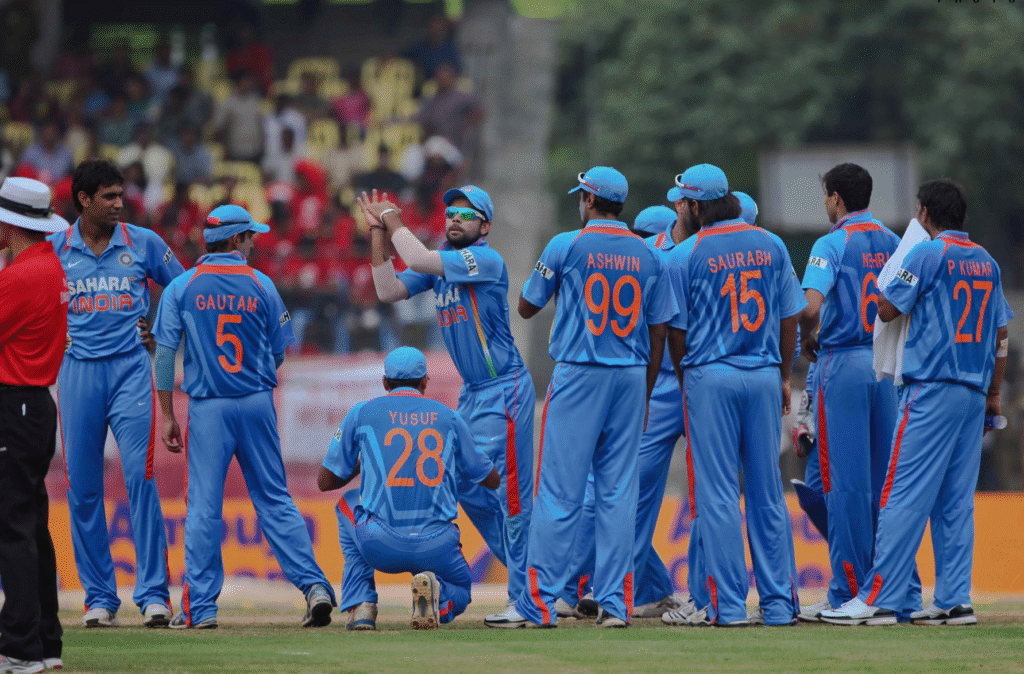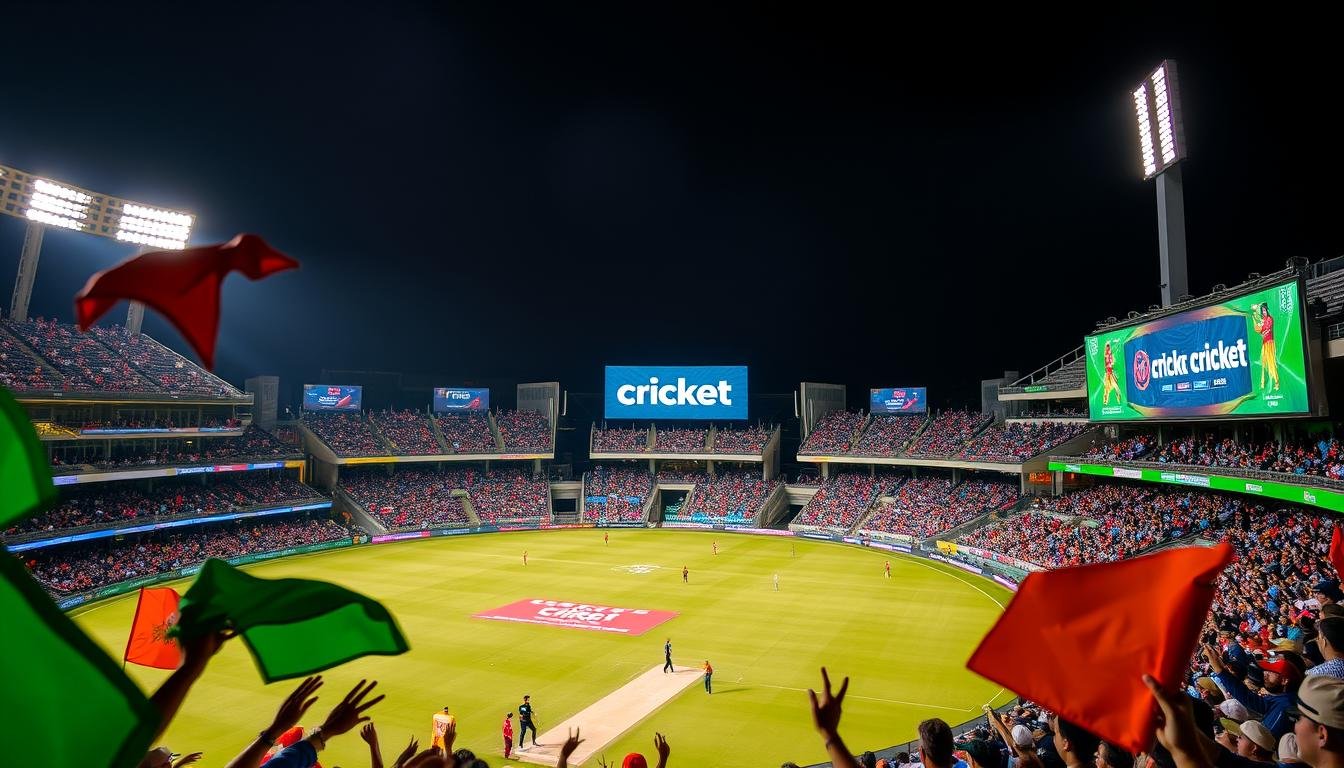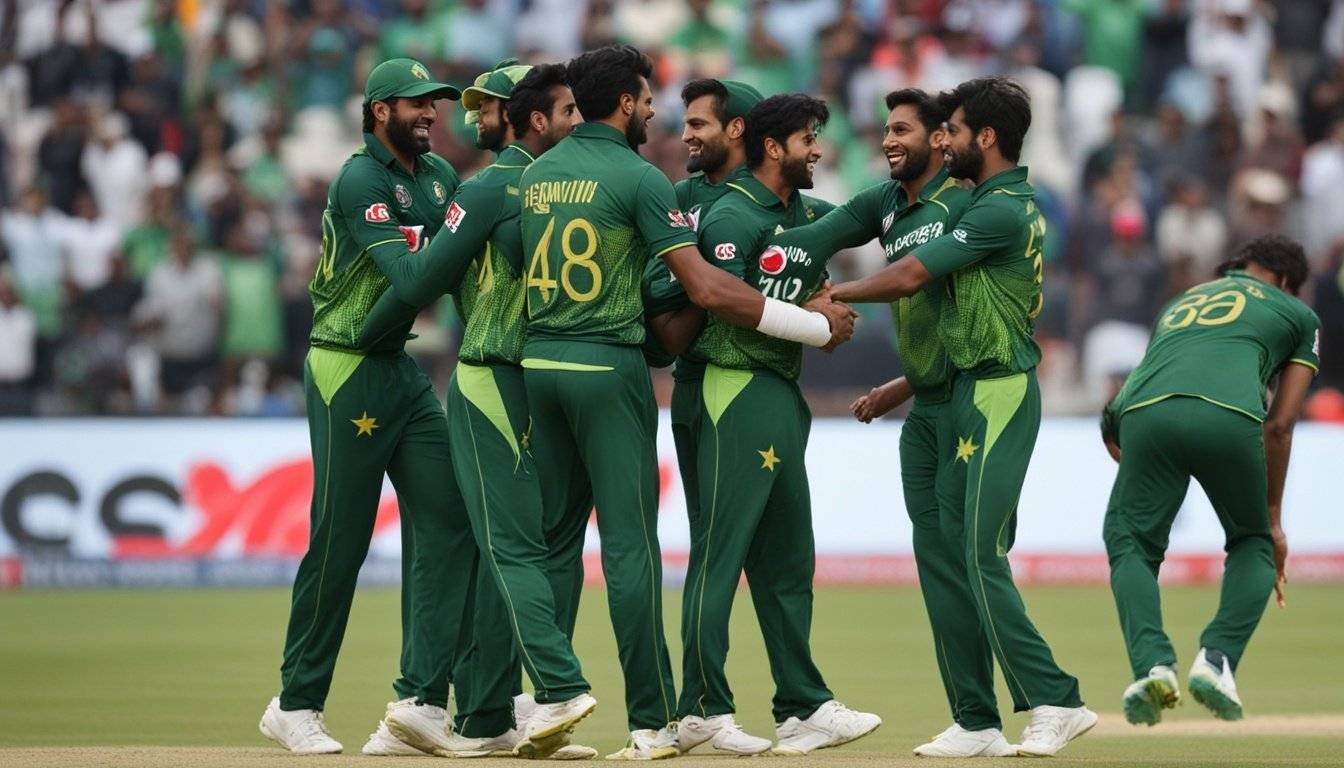
Cricket isn’t one game. It’s a family of formats that run at different speeds and reward different skills. Some stretch over days and ask for patience. Others fit into an evening and demand instant impact. The number of overs, the type of ball, and even the time of day shape how teams bat, bowl, and set fields.
Understand the format and you’ll understand the strategy. Each form brings its own unique rules, durations, and appeal.
This guide breaks down the major types (Tests, ODIs, T20s, and T10s), plus the domestic and informal versions you’ll see in parks, clubs, and leagues.
International Cricket Formats
Test Cricket
Test cricket is the oldest and longest format of the game, with matches lasting up to five days. Each of the two teams gets to bat twice (two innings per team). Captains have the option to declare their innings closed before all players are out, which adds a strategic element. Because of the extended playing time, matches can end in a win, loss, or draw.

Key rules and conditions: Tests target 90 overs per day, with strict over-rate management now aided by a stop clock between overs to keep play moving. There is no maximum number of overs in a Test match, allowing play to continue until a result is reached or time runs out. Decision Review System (DRS) technology is used for close calls. These playing conditions are set and regularly updated by the International Cricket Council (ICC).
Strategy: Win the battle of time and conditions. Bowlers look for swing and seam early, reverse swing later. Batters build long partnerships, wearing down attacks. Captains balance aggression (to set up a result) with control (to avoid collapse). The third test in a series often proves decisive, especially in high-profile contests like England vs India, where momentum can shift dramatically.
Pitch & equipment: Red ball, traditional whites, softer outfields in some venues to preserve the ball. Pitches are prepared for endurance. They tend to start firm and then deteriorate as the match goes on, which brings spin and variable bounce into play late.
One Day Internationals (ODI)

One Day Internationals (ODIs) are a popular format of limited-overs cricket where each team faces a set maximum of 50 overs in a single innings. Played with a white ball and often under day or day-night conditions, ODIs are completed within an entire day, making the format accessible and exciting for fans.
The team batting first sets a target score, and the opposing team must try to score as many runs as possible within their 50 overs to win the match. This format balances strategic pacing with aggressive play, requiring teams to carefully manage their batting and bowling resources throughout the innings.
Key rules and updates (2025): ODIs historically used two new balls (one from each end). From July 2025, two balls are still used only until the end of the 34th over. From the 35th over, the fielding side chooses one of those used balls to finish the innings (last 16 overs). The goal: restore late-innings wear, reverse swing, and balance between bat and ball.
Strategy: Think in phases. Powerplay (fielders in), consolidation in the middle overs, then a high-octane “death” overs finish. Bowling plans mix new-ball seam, middle-overs spin, and death-over yorkers and slower balls. Tactics for the team batting, or batting team, often revolve around pacing the innings, managing wickets, and adapting to fielding restrictions and weather adjustments.
Pitch & equipment: White ball (now aging more in the final overs under the new rule), colored kits, and often flatter batting surfaces to encourage runs under lights.
Twenty20 (T20) Cricket
T20 cricket is a fast-paced format where each team plays 20 overs. It’s the most popular form of cricket today, known for big hits, quick scoring, exciting play, and epic finishes. Matches usually take about three hours.
This format has grown globally thanks to franchise leagues like the IPL, BBL, and CPL, which feature teams with top players from around the world. T20 games often take place at night with bright lights and lively crowds, combining sport and entertainment.
Key rules: Standard ICC T20I playing conditions govern fielding restrictions, DRS usage, and pace-of-play regulations (including penalties for slow over rates). There are specific rules about the number of fielders allowed outside the inner circle, which change as the game progresses to encourage aggressive batting and higher scores.
Strategy: Roles matter. In these shorter formats, teams play T20 cricket matches with aggressive intent. Powerplay hitters attack hard up top, anchors rotate strike, finishers target boundaries in the last five overs. Bowlers weaponize change-ups, wide yorkers, and match-ups by hand and angle. Fielding is hyper-athletic; one run saved is gold.
T10 Cricket
T10 cricket is the newest and shortest professional format, featuring just 10 overs per side. Matches last approximately 90 minutes, making it a fast-paced, high-intensity version of the game.

The flagship tournament, the Abu Dhabi T10, launched in 2017, has quickly become a key event on the cricket calendar.
With only 10 overs per innings, every ball counts. Batters play aggressively from the start, and bowlers deliver in short, sharp spells.
Strategy: Maximum intent. Batters swing from ball one; bowlers bowl in one- or two-over bursts. Toss decisions and boundary sizes matter even more because there’s no time to recover from errors.
Cricket World Cup

The Cricket World Cup is the biggest event in international cricket, held every four years. It brings together the top teams from around the world to compete for the title of world champion.
Organized by the International Cricket Council (ICC), the tournament features one-day matches where each team tries to score more runs than the other within a set number of overs.
Domestic and Professional Cricket Formats
First-Class Cricket
First-class cricket is the traditional, longer version of the game, usually played over three or four days at the domestic level.
In these matches, teams have two innings each to bat and bowl. It tests players’ endurance, skill, and strategy as they adapt to changing pitch conditions over multiple days.
This format helps players develop the patience and techniques needed for the highest level of cricket, including Test matches.
List A Cricket
List A cricket matches mirror one-day internationals at the domestic level. These matches are played with 50 overs per side, following structured rules similar to ODIs, including powerplays up front, a chess match in the middle overs, and a frantic finish at the death.
Teams rehearse ODI tactics here, from new-ball swing and spin chokeholds to yorkers and slower balls at the end.
Franchise Cricket
In franchise cricket, city-based teams compete in short, fast-paced tournaments. These leagues usually follow the Twenty20 (T20) format, with each team playing 20 overs per match.
Players are selected through drafts, and teams often include international stars alongside local talent.
Franchise cricket is known for its lively atmosphere, big crowds, and high-energy matches, making it a favorite among fans worldwide. It also helps players improve by exposing them to different playing styles and strategies.



